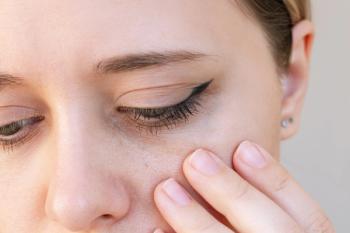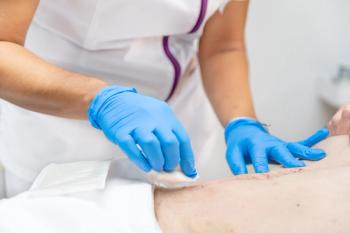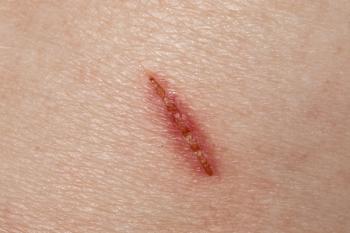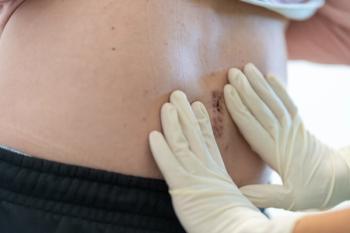
Acetic Acid and Wound Healing
Vinegar has an antibiotic and antioxidant effect that has been used in dermatology and medicine for ages.
Vinegar or acetic acid, may not be as alluring as honey or controversial as stem cell therapy, however, the age-old remedy has long been employed in wound care and wound healing protocols due to the therapeutic success achieved from its antimicrobial and antioxidant properties. A recent study1 highlighted the therapeutic benefit of acetic acid in a mosaic of dermatologic diseases and conditions, underscoring the need for clinicians to perhaps rethink their topical treatment strategies and protocols, particularly in those patients who are seeking more natural alternative medicine treatment options.
Vinegar has been used to treat wounds by Hippocrates since the year 420 BC when its medicinal effects were already well-known. Many patients today are gravitating towards natural medicine and are actively looking for alternative treatment options for their condition and, according to Dr. Steve Daveluy, co-author of the study, acetic acid is one traditional treatment that could be better utilized as a monotherapy and/or an adjuvant to other topical therapies currently used in dermatology.
“As dermatologists, there are certain things that we are used to working with and that includes acetic acid for wounds and wound care. I think that patients are really hungry for alternative medicine but when it comes to the doctor’s side, I think it’s kind of mixed,” said Steve Daveluy MD, associate professor and program director of Wayne State Dermatology, president of WSUSOM Alumni Board of Governors, president of Michigan Dermatological Society, and past president of Wayne County Medical Society of Southeast Michigan, Dearborn, MI.
Dermatologists will often recommend acetic acid for subungual pseudomonas infections or for interdigital fungal infections. From the wound care aspect, pseudomonas infections often impact wounds in the skin and can be therapeutic challenging and here, Daveluy recommends the use of vinegar oaks as a great therapeutic option.
“If we already recommend it for subungual pseudomonal infections, we can pivot and also recommend it for cutaneous wounds in general as its efficacy has been proven in wound care and wound healing,” Daveluy said.
Daveluy and fellow colleagues recently conducted a literature review of clinical trials and epidemiologic studies looking at the evidence for the use of vinegar in the treatment of several skin diseases including bacterial and fungal infections, warts, dermatitis, wound healing, and marine animal injuries, among other indications. In summary, they found that acetic acid has proven antimicrobial, antifungal, and antioxidant properties and effects, and is useful in the treatment of several skin conditions including epidermolysis bullosa, uremic pruritus, and striae gravidarum. Data also showed variations in antimicrobial and antifungal activity depending on the type of vinegar applied and the type of microorganism involved.
Most research studies use commercially available apple cider or plain white vinegar between 2% and 5% acetic acid, which work similarly and are safe to use. Some of the studies on wound healing have shown therapeutic benefits with combined therapies consisting of acetic acid soaks followed by antibacterial ointments/creams or other wound dressings for optimal outcomes.
“For wound care, I usually tell my patients to either apply acetic acid directly in approximately 20-minute soaks or mix it with 50% water resulting in a 2.5% acetic acid soak, the latter being less irritating for more sensitive skin. It is critical to remind patients to make sure the soak is removed and not left on the wound for long periods of time, as this could result in severe irritation and burns to the skin, particularly with undiluted acetic acid,” Daveluy said.
While some physicians have acetic acid in their armamentarium and regularly recommend the treatment for various indications in their patients, Daveluy nevertheless admitted that it may be easier for others to simply write a prescription. However, incorporating acetic acid into topical treatment protocols and regimens could also help stem the alarming rise in antibiotic resistance of late.
Acne treatment will usually consist of a combination therapy starting with an antiseptic wash like benzoyl peroxide, followed by a topical antibiotic. According to Daveluy, this treatment dynamic could be utilized more often for the same therapeutic goal in wound care where acetic acid is first used to clean the wound, followed by an antibiotic cream.
“There is a lot of data out there showing that vinegar is safe to use and can play a role in achieving optimal therapeutic outcomes when used appropriately. As such, those patients seeking alternative therapies that have a proven efficacy can be encouraged to apply this therapy for a number of dermatologic indications including wound care and wound healing,” Daveluy said.
References
1. Elhage K, St Claire K, Daveluy S. Acetic acid and the skin: a review of vinegar in dermatology. Int J Dermatol. 2022 Jul;61(7):804-811. doi: 10.1111/ijd.15804. Epub 2021 Aug 5.
Newsletter
Like what you’re reading? Subscribe to Dermatology Times for weekly updates on therapies, innovations, and real-world practice tips.

















